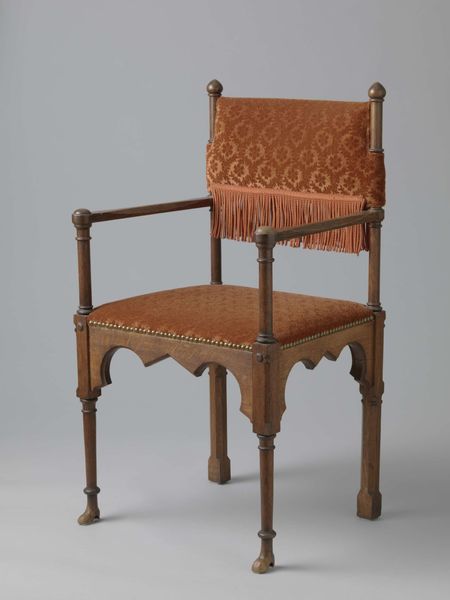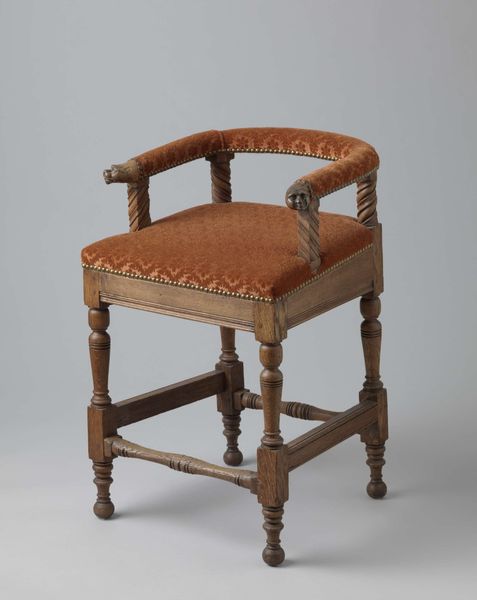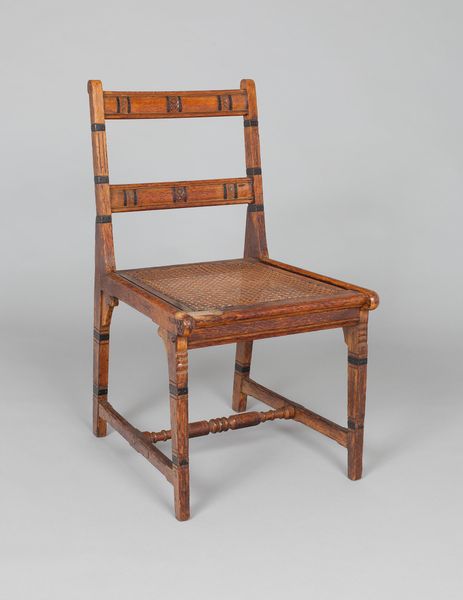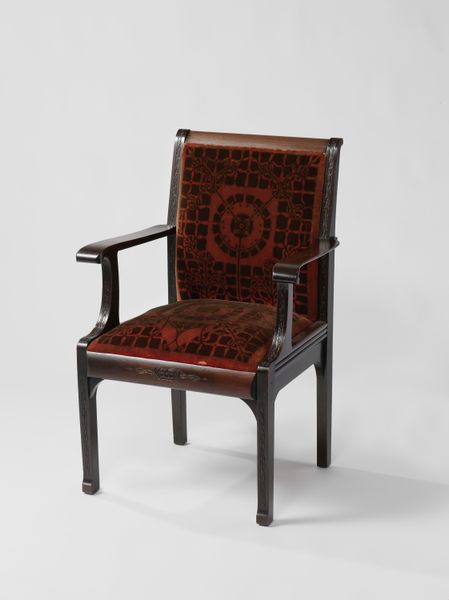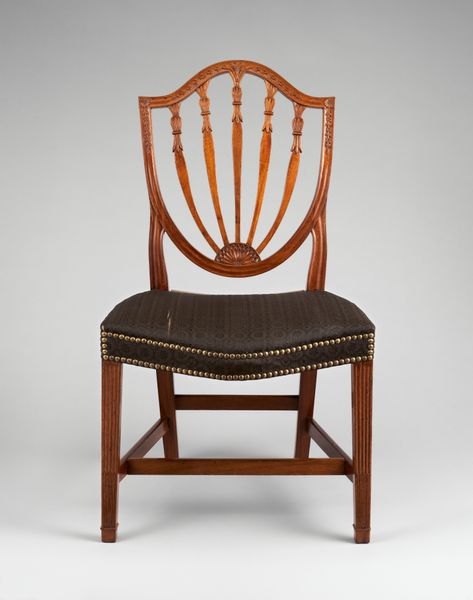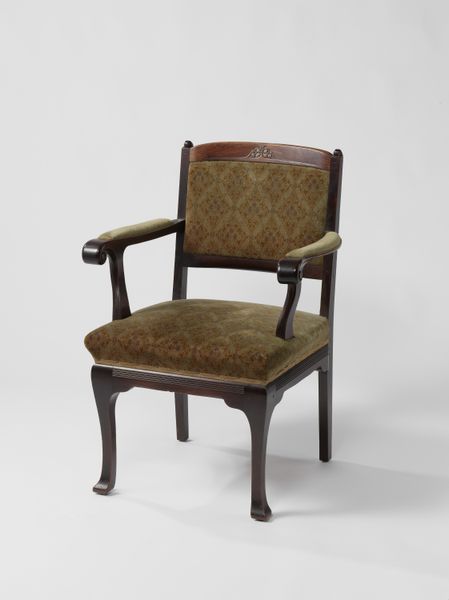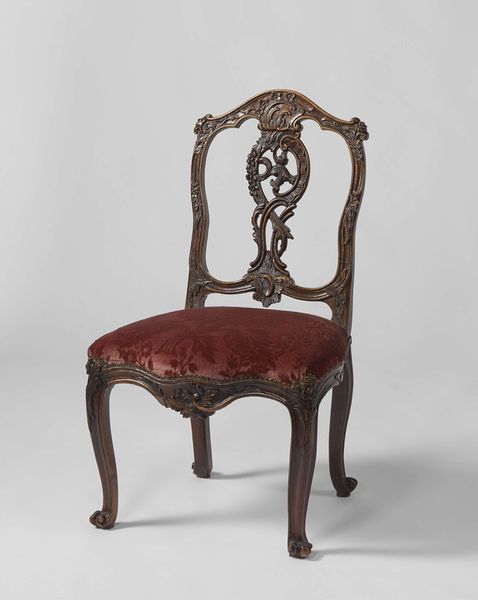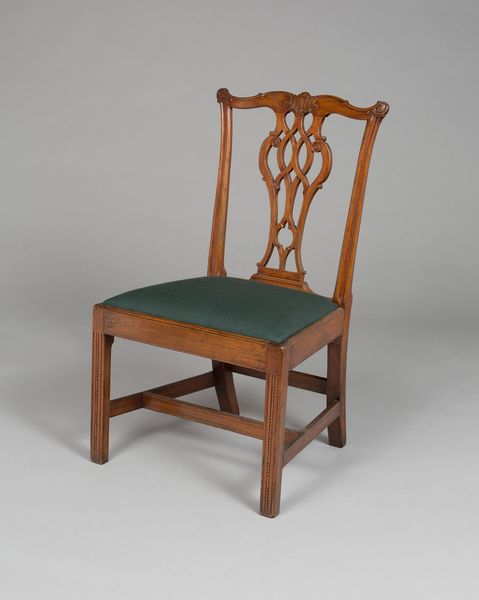
Armchair from the prison cell of Johan van Oldenbarnevelt c. 1600 - 1650
0:00
0:00
carving, wood
#
carving
#
baroque
#
dutch-golden-age
#
furniture
#
wood
Dimensions: height 87 cm, width 61.5 cm, depth 43 cm
Copyright: Rijks Museum: Open Domain
Curator: This object before us, residing here at the Rijksmuseum, is a 17th-century armchair. More specifically, it’s known as the "Armchair from the prison cell of Johan van Oldenbarnevelt", dating roughly from 1600 to 1650. Editor: It’s surprisingly ornate, isn't it? The lines of the wood are heavy but it's saved from being ponderous by the regular spacing of what look like decorative studs lining all the upholstered sections. The overall effect gives it a sort of severe dignity. Curator: Exactly. Its Baroque styling, crafted from carved wood, is demonstrative of the Dutch Golden Age. Yet the history lends another layer. To think this very chair may have held a figure of immense power awaiting execution is fascinating. Editor: The studs almost give me goosebumps, like rows of eyes watching Oldenbarnevelt, representing society, judgement... There is a definite feeling of powerlessness imbued in that. Considering its history, I would assume this furniture wasn't his own, selected for his own taste and comfort? Curator: Quite right. Furnishings within prisons reflected the inmate's perceived status and expected sentence. In Oldenbarnevelt’s case, as a high-profile political prisoner, some level of comfort would befit his previous standing even as his fate was sealed. It speaks volumes about the era's perception of justice and hierarchy. Editor: What about the symbolic power of seating itself? A chair, especially one like this with its authoritative stance, implies a position of command. Reduced to a prisoner's item, does it take on a new symbolic weight as an emblem of authority taken away? It also almost has the trappings of a confessional... which would further indicate societal power structures and feelings of guilt and supplication. Curator: Absolutely. It's an ironic twist. The chair itself, a symbol of power and authority, becomes a stark reminder of its complete absence in his circumstances. Even within captivity, there's this interplay between Oldenbarnevelt's former status and his present, diminished one—all embodied in this simple piece of furniture. It is a deeply unsettling paradox, and it challenges our conceptions of how a society uses images of itself, and indeed justice. Editor: Thinking about it, in the end, objects like this remind us of the universal symbolism—and that, regardless of social or political context, symbols persist. Curator: Indeed, it is a chilling but undeniably fascinating look at the ways in which an ordinary object is invested with extraordinary political weight.
Comments
rijksmuseum about 2 years ago
⋮
In 1618 Grand Pensionary Johan van Oldenbarnevelt was imprisoned and tried in The Hague, where he was eventually condemned to death for treason. His political supporters regarded him as a martyr to their cause. According to tradition, he sat on this chair during his final days in prison.
Join the conversation
Join millions of artists and users on Artera today and experience the ultimate creative platform.
